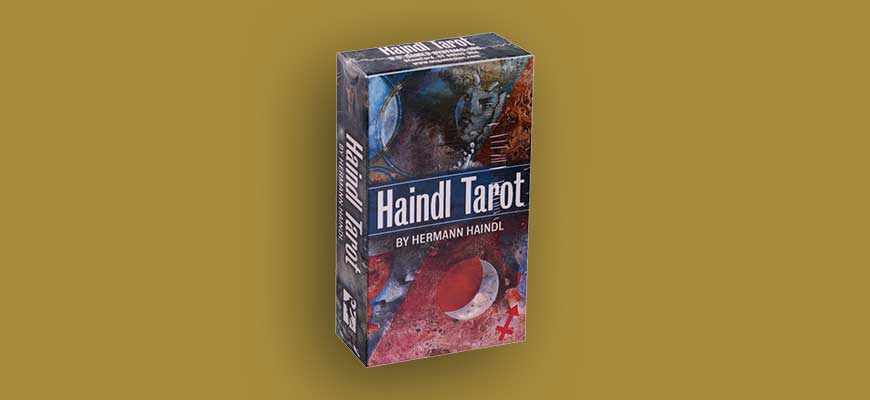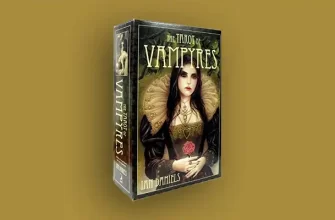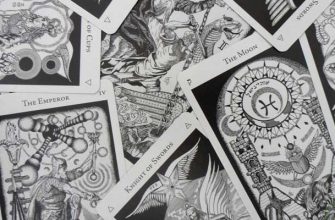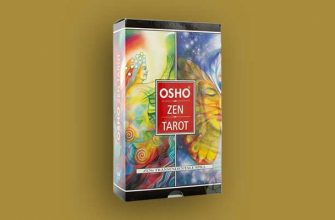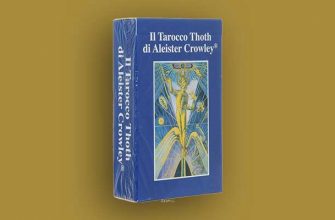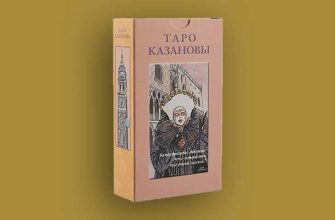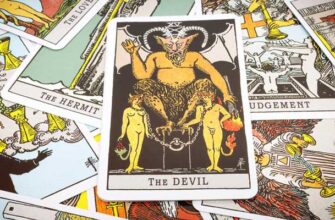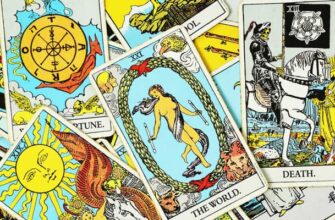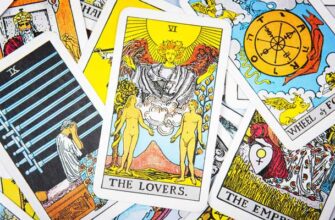Today we will talk about one very unusual deck, which personally left me with very ambiguous impressions. This is an amazing creation of the artist Hermann Heindl, which is called Taro Heindl. However, I have come across a variant of the pronunciation of “Heindl”, but this, I think, does not change the essence. The deck is very complex, mesmerizing with its deep images, which Hermann Heindl drew himself. In general, I must say, I just love the cards that the authors illustrate, and not the artists they hired. But let’s take a closer look at this wonderful deck.
History of Deck Creation
To begin with, it is worth saying a few words about the author himself – Hermann Heindl. This is a very unusual person who went through the war, traveled to many countries, taught art, acted as an active protector of nature and, of course, was engaged in spiritual development. Such a multifaceted personality simply could not create a boring and similar tarot deck, could it? Taro Heindl first saw the light of day in 1989 in Germany, it was released by the little-known publishing house Knaur Esoterik, but a year later a version of the deck from US Games was released. The re-release took place in 2011. There was also another version of the deck – from the German edition of Lotos, dating back to 2002. Through deep philosophical images, the artist showed his, personally rethought, perception of the Tarot system and, I must say, he did it more than worthily.
Key Features
The Heindl Tarot deck is very different from many of the stamped samples that are published almost every month by Lo Scarabeo. Do not think, I do not want to say anything bad about the main “supplier” of esoteric products, but still, the publications of recent years personally, to be honest, do not please me at all: the same Waite, simply redrawn in a new way, or far from the real Tarot oracle system. Heindl’s creation looks much more thoughtful. The deck follows the Crowleyan tradition, with one small exception: Strength is still in eighth place, Justice is in eleventh. For some reason, the artist did not accept this very rearrangement. In all other respects, Heindl’s Tarot can be safely called executed in the spirit of Crowley.
The court cards, as in Tarot Tota , are represented by two male and two female characters, but they are named slightly differently: Father, Mother, Son, Daughter. I would still call the number cards drawn, since in the background behind the symbols of the suits are hidden fragments of the author’s canvases. But the main innovation, which, by the way, was subsequently adopted by some other deck creators, is the correspondences plotted on the cards: we see hexagrams I-Ching in the illustrations of the Minor Arcana of the Tarot Heindl, and on the Elders – the runes of the Armanic Futhark and the letters of the Hebrew alphabet (Kabbalah) … Also, the Major Arcana have astrological correspondences, and the Minor ones are supplied with keywords that are very similar to those used in the Tarot of Thoth, albeit with somewhat shifted accents here and there. In general, the deck gives the impression of a very thoughtful, serious work that has been created over the years. However, it really was so. No CGI, every stroke is hand-drawn!
Symbolism of cards
The symbolism used in the Heindl Tarot is very deep. Each drawing makes you think, take a closer look, analyze it from different angles, take a closer look at the smallest details. Here we will find references to mythology, history, religion, as well as numerous cultural features of different countries (remember that Heindl traveled a lot?). It will definitely not be easy for a beginner to deal with such a colossal amount of information present in each card. However, a little later I will definitely tell you about one wonderful book that will help a lot in studying this unusual deck. In the meantime, it’s time to dive into the world of the Major Arcana.
Major Arcana
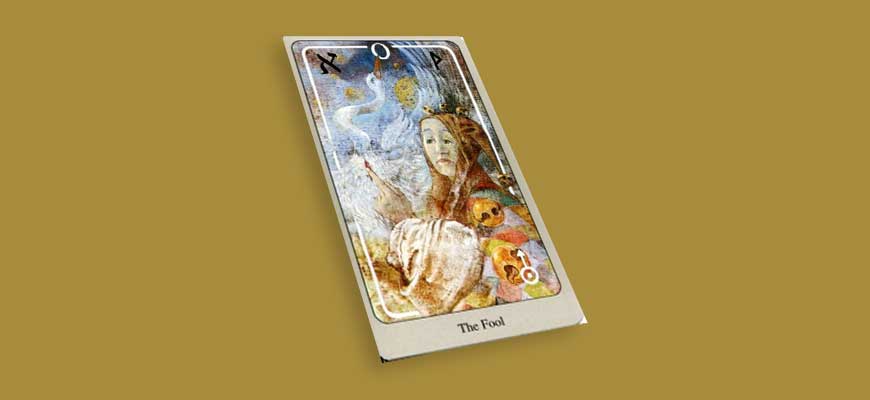
I want to start my journey through the Major Arcana of the Heindl Tarot with those cards that I personally remember most at the time when I was working with this deck. Let’s start with the Jester. The image created by Hermann Heindl combines several archetypes at once: this is a traditional jester, a comedian, and a child without experience who is just starting his life, and the knight Parsifal, who went in search of the Holy Grail, and St. Francis of Assisi. In addition to the main character, there is a wounded swan on the map, symbolizing suffering. According to legends, it was Parsifal who once shot at a swan, but at the same time as a bird, he wounded himself – at that moment he first knew suffering and began his journey, which eventually led to redemption. Heindl assigned the Jester Vunyo rune ,
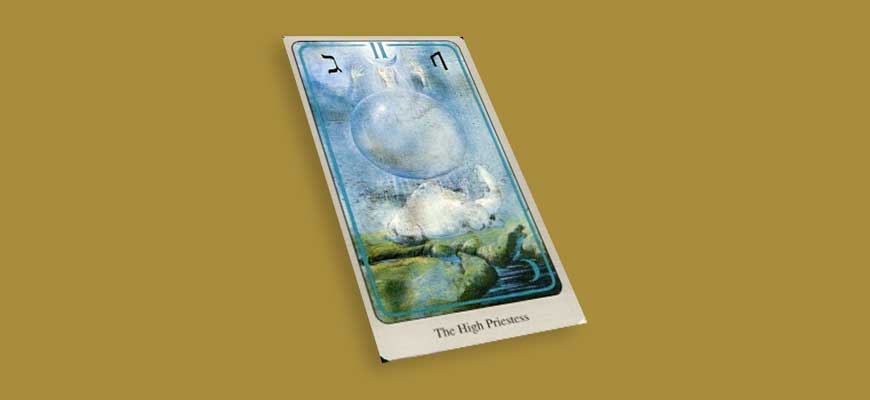
The next Major Arkan Tarot of Heindl, on which I would like to dwell, is the High Priestess. Some unearthly calmness emanates from him directly. Heindl’s priestess is the keeper of life itself. This is the Goddess standing behind the floating ball. She exudes light. In the image of the card, lunar energies are very much felt, and also water, symbolizing the ebb and flow. On the Arcana we also see a camel (a reference to the kabbalistic correspondence – the letter Gimel). The animal acts as a hint that it is the Priestess who leads us through the “deserts of life” – difficult periods, difficult circumstances. Interestingly, Hyndl attributed the Uruz rune to the Priestess, which, it would seem, has little in common with this Arcanum. However, the accompanying book for the deck, written by Rachel Pollack, explains: the word “Ur” in German means the phrase “before the beginning of everything”, ie in fact symbolizes the Great Mother, who is the source of life. And the rune is also associated with a force that gives form to primitive energy.
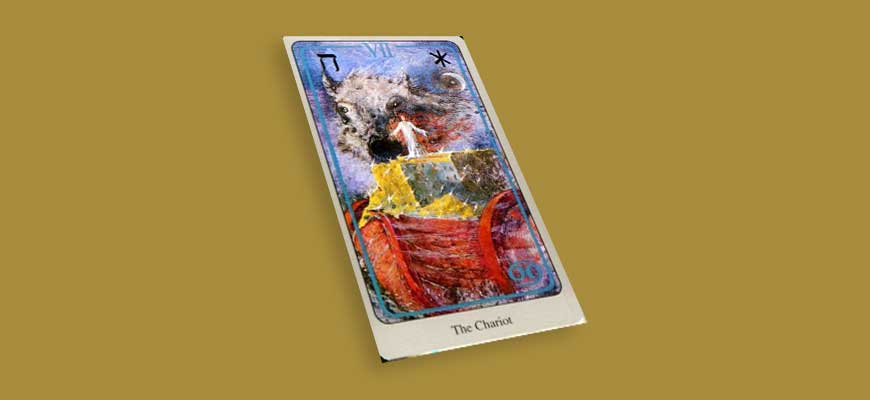
The next Major Arcana, which I would like to focus on, is the Chariot. In the Heindl Tarot, we see a completely unusual image: instead of a traditional carriage, a bright red boat with wheels rushing along the waves appears before us – a sign of dynamics, movement. A figure in white robes resembling a shroud stands on a high pedestal, and behind her rises a huge wolf’s face, symbolizing danger. A crescent moon is seen in the sky. The wolf and the moon can be considered as fears, deep complexes, but they are actively opposed by the figure of the Charioteer, who overcomes any danger and rushes along the waves of life on his unusual ship. The rune associated with the Chariot is Hagalaz (variation of the writing with a snowflake). I think it should be read here in terms of breaking blocks that hinder movement.
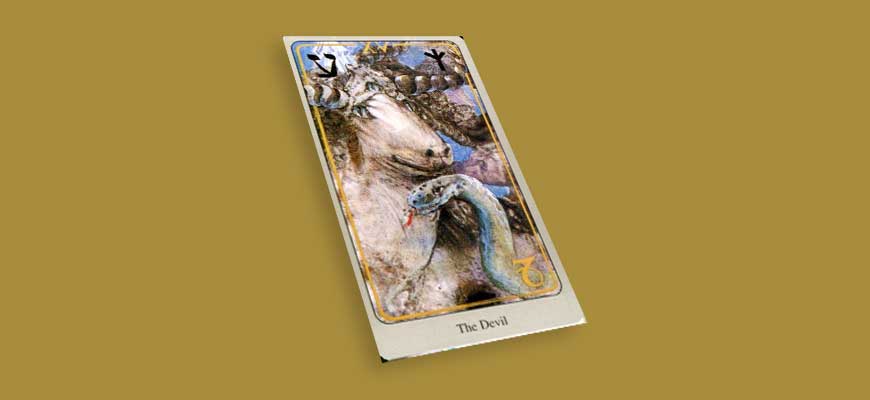
The next Arcanum that we will consider is the Devil. Painfully, he turned out to be unusual in Heindl. He is represented as a goat, but just look into his hypnotic eyes! Perhaps this is the most charming Devil that I have ever seen! The third eye on the forehead of the goat is a reference to the Kabbalistic correspondence – Ayin, which means “eye, eye”. In addition to the central character, there is a snake on the map – a symbol of wisdom, rebirth, and in some cultures, evil. Runic correspondence of the XV Arkan Tarot Heindl – Algiz . I thought for a very long time about why the author of the deck chose this particular rune, but then I still understood (at least, this is my version): The devil essentially symbolizes primitive, instinctive, natural strength. This is something over which we are sometimes not in control. But instincts not only lead us to the very bottom, but also allow us to survive, protect – this is inherent in nature, the Higher Forces. Algiz in this aspect and means this internal, natural protection. Only by accepting ourselves together with our nature, we take the path of spirituality. The devil was invented by the Christian religion, but in reality he does not exist – there is only ourselves and our nature, which must be accepted in order to gain integrity.
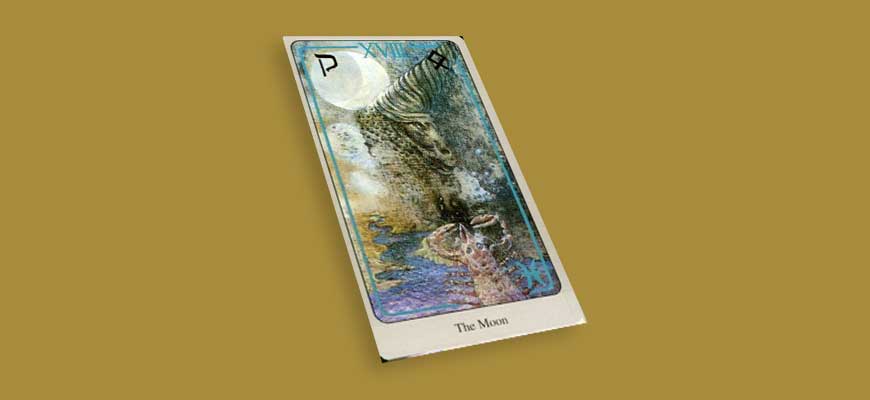
Let’s take another Trump card, and move on to the Minor Arcana. I propose to consider the moon. So, in the Heindl Tarot, on the image of the card, we see a mysterious, gloomy landscape, along which an illusory waterway flooded with moonlight stretches. Cancer symbolizes our inner, deepest fears, and the unicorn – fantasies, dreams, the power of imagination. In fact, the meaning of the card is not very different from the traditional one. But the Othal rune , added by Heindl, I perceive here as a hint of the wealth of our inner world and the establishment of boundaries between the real and the illusory.
Minor Arcana
The Minor Arcana of Heindl’s Tarot at first glance seem to be only partially traced, however, if you look closely, in the background we see fragments of the artist’s paintings, which are also related to the meaning of the cards. Since the overview is already quite large, I propose to briefly go over four number cards – one from each suit.
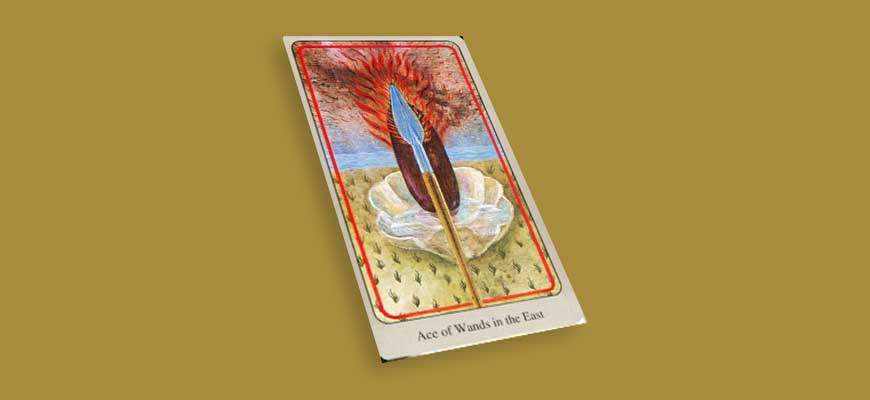
The wands symbolize fire, but in the Heindl Tarot they look like spears. On the Ace of Wands, in addition to the fiery spear itself, we see the yoni and the lingam – a phallic lake and stone, the female and male part of the divine in Indian culture. In fact, Arkan reflects two poles of existence, the combination of which becomes the cause of the emergence and development of the Universe.
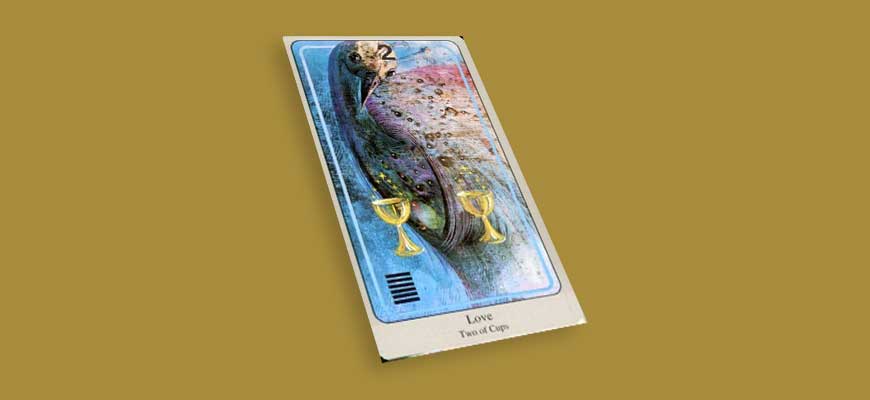
I really like the Two of Cups – a very subtle, sensual, but at the same time calm and harmonious card. The center character is a peacock – a bird associated with balance, rebirth, grace. Rachel Pollack’s book to Tarot Heindl allowed me to notice an important emphasis: the peacock’s beak is turned to the left, which psychologists usually associate with the unconscious, and the bird’s eyes look to the right. It turns out that love pulls out feelings from our subconscious that we were not aware of.
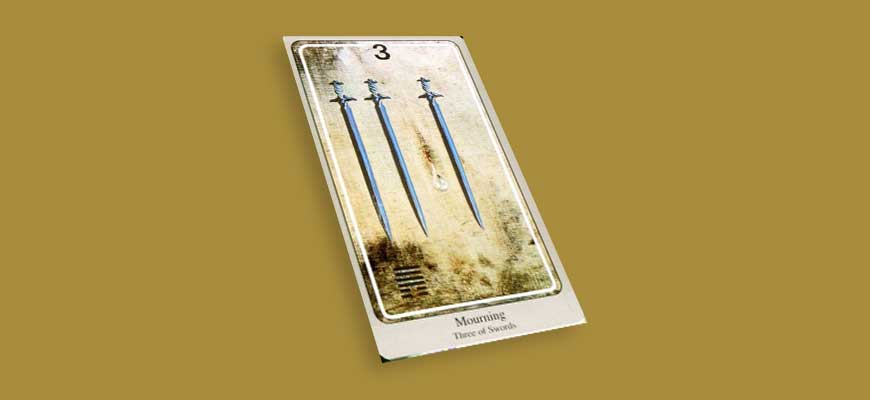
Now look at the Three of Swords. Despite the fact that there is no broken heart familiar to many, looking at this map, some very subtle, strange sensations arise inside, as if longing for the past, grief, despair, pain burst out from the depths of the soul. Hermann Heindl connected this card with world suffering and the need for every person to go through a similar experience. A wound from which a tear flows – what a deep and unusual image!
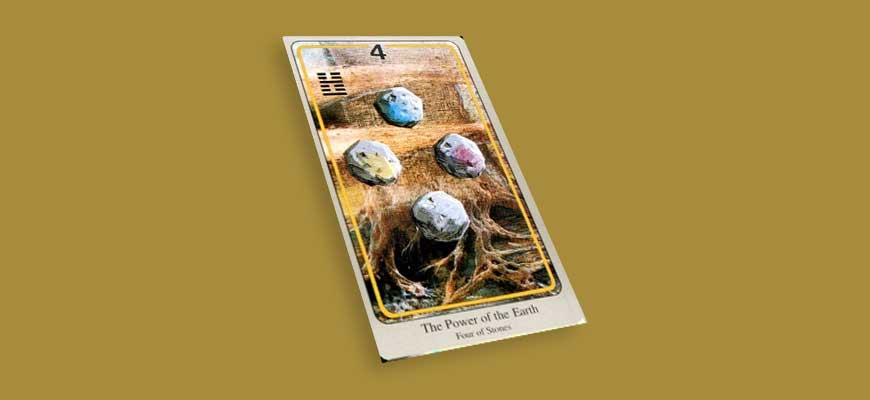
From the suit of Stones (as the Pentacles are called by Heindl), I was fascinated by the Four in due time. Rachel Pollack compares the roots of the tree on the map to the roots of Yggdrasil, the World Tree. Four stones of different shades symbolize the four cardinal points. The card is called “Power of the Earth”.
When considering the Number cards, I deliberately did not include in the review a description of the I Ching hexagrams that are present in the Arkans, since I believe that only tarologists who have decided to work with such a deep deck personally should get into these details. In the meantime, let’s move on to the Court Cards.
Court Cards
As I said, the Figure Arcana in the Heindl Tarot is very specific and very different from the traditional ones. Here we meet Father, Mother, Son and Daughter. The artist connected each suit with one of the cultures: Wands (Fire) – India, Stones (Earth) – the culture of the American Indians, Cups (Water) – Europe, Swords (Air) – Egypt. From the outside, it seems as if with this approach we get some “mishmash”, but no: the characters of the Court look very alive, and the deck itself feels whole, since elements of different cultures and mythology are found in all other cards, not only in Courtiers.
So, the Wands are represented by the following heroes: Father – Brahma, Mother – goddess-destroyer Kali, Son – Krishna. The daughter is Radha.
The cups show the culture of Europe, and here we meet Odin (Father), Venus of Willendorf (Mother), Parsifal (Son) and Brigid (Daughter).
The Family of Swords immerses us in the mysterious culture of Ancient Egypt: the Father is represented by the sun god Ra, the mother is the goddess of the starry sky Nut, the Son is Osiris, the Daughter is Isis.
And, finally, the suit of the Stones reminds of the heroes of the mythology of the American Indians: Father – Old Man Bigfoot, Mother – Spider-Woman, Son – Chief Seattle, Daughter – Woman-White Bison.
Peculiarities of card interpretation
It will definitely be very difficult for a beginner to understand the Heindl Tarot, since the plots are based on mythological stories, legends of various continents and philosophical treatises. Despite the fact that Rachel Pollack suggests using upside-down cards in the book dedicated to this deck, it seems to me that they are not suitable for this purpose. Arcana even without turning over is so multifaceted that the need to introduce additional accents simply disappears. You can make friends with the Heindl Tarot through a long study of the Arcana, and even better – through meditation on the images created by the artist.
Which deck is suitable for consideration
Honestly, I didn’t manage to look through everyday questions on this deck, it turned out more precisely, but the answers still came out more focused on the inner world of a person, his experiences, and not on the events of the outer world. In general, I believe that the Heindl Tarot is a universal tool with which you can analyze any situation, provided that you feel the energy of these cards, and do not rely on bookish, stereotyped interpretations. In general, for me personally, the deck caused a feeling of slight melancholy, I liked to make layouts on it, when it was raining outside the window, colorful autumn leaves were flying. This deck is from the series “for a special mood”.
Who can use the card data
- Lovers of decks made by real artists
- To Crowleyan Direction Card Collectors
- Aesthetes who love deep, multifaceted images with several layers of meanings
- Tarologists wishing to master a rather complex new instrument
- For those who are looking for a deck to consider the psychological side of issues, search for their destiny, karmic layouts
Recommended reading for familiarizing yourself with the deck
Of the books that will help you get to know the Heindl Tarot better, I can recommend only one – written by Rachel Pollack. The writer lived with the Heindl family for several months to publish this work. She asked the artist in detail about the ideas on which the illustrations were based, his travels, spiritual discoveries, and on the basis of this communication, she wrote an excellent large book about the Tarot of Heindl. Perhaps this is the only worthy work that lifts the veil over this mysterious and unusual deck.
